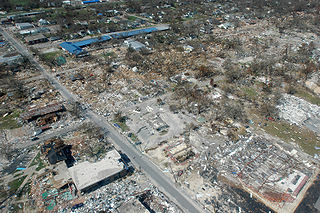
An actuary is a business professional who deals with the measurement and management of risk and uncertainty. The name of the corresponding field is actuarial science. These risks can affect both sides of the balance sheet and require asset management, liability management, and valuation skills. Actuaries provide assessments of financial security systems, with a focus on their complexity, their mathematics, and their mechanisms.

Actuarial science is the discipline that applies mathematical and statistical methods to assess risk in insurance, pension, finance, investment and other industries and professions. More generally, actuaries apply rigorous mathematics to model matters of uncertainty.

The International Actuarial Association (IAA) is a worldwide association of local professional actuarial associations.

The Society of Actuaries (SOA) is a global professional organization for actuaries. It was founded in 1949 as the merger of two major actuarial organizations in the United States: the Actuarial Society of America and the American Institute of Actuaries. It is a full member organization of the International Actuarial Association.

The Casualty Actuarial Society (CAS) is a professional society of actuaries specializing in property and casualty insurance.
The Institute of Actuaries was one of the two professional bodies which represented actuaries in the United Kingdom. The institute was based in England, while the other body, the Faculty of Actuaries, was based in Scotland. While the Institute and Faculty of Actuaries were separate institutions, they worked very closely together, and their professional qualifications and actuarial standards were identical. On 25 May 2010, voting members of the institute who took part in a ballot voted to merge the institute with the faculty, thus creating the Institute and Faculty of Actuaries, which came into being on 1 August 2010. The Institute of Actuaries ceased to exist on that date.

The Actuarial Association of Europe (AAE) was established in 1978 as Groupe Consultatif des Associations d'Actuaires des Pays des Communautés Européennes (GC), renamed to Groupe Consultatif Actuariel Européen in 2002, and given its present name on January 1, 2014.

The Canadian Institute of Actuaries (CIA) is the national organization of the actuarial profession in Canada. It was incorporated March 18, 1965. The FCIA designation stands for Fellow of the Canadian Institute of Actuaries. As the national organization of the Canadian actuarial profession, the CIA serves the public through the provision by the profession of actuarial services and advice by: representing the Canadian actuarial profession in the formulation of public policy; promoting the advancement of actuarial science; educating and qualifying CIA members; ensuring that actuarial services provided by its members meet accepted professional standards; and assisting actuaries in Canada in the discharge of their professional responsibilities.
The Faculty of Actuaries in Scotland was the professional body representing actuaries in Scotland. The Faculty of Actuaries was one of two actuarial bodies in the UK, the other was the Institute of Actuaries, which was a separate body in England, Wales and Northern Ireland. While the Faculty of Actuaries and the Institute of Actuaries were separate institutions, they worked very closely together, and the professional qualifications and professional standards for actuaries were identical in each of them. On 25 May 2010, voting members of the Faculty who took part in a ballot voted to merge the Faculty with the Institute of Actuaries, thus creating the Institute and Faculty of Actuaries which came into being on 1 August 2010, superseding the Institute of Actuaries which ceased to exist on that date.

The Institute of Actuaries of India is the sole national apex body for actuaries in India. It was formed in September 1944 by the conversion of the Actuarial Society of India into a body corporate by virtue of the Actuaries Act, 2006. It is under the ownership of Ministry of Finance, Government of India.
The Brazilian Institute of Actuaries is the national association for actuaries in Brazil.
The Czech Society of Actuaries is the association of actuaries in Czechia. It aims to promote education and research in actuarial science and to mediate social and professional contacts among actuaries.
James C. Hickman was an American actuary. He was internationally publicized for his work in actuarial education as well as being a major contribution in the development of the actuarial profession. He was a professor emeritus of business and statistics and former dean of the University of Wisconsin–Madison School of Business.

Institut de Statistiques de l'Université de Paris is a graduate school of statistics based in Paris, in the fifth arrondissement. It offers specializations in actuarial sciences, Biostatistics as well as industry and services. The ISUP is considered one of the most prestigious centers of learning of statistics in France, reflected in the number of job offers received regularly, the strength of its alumni network, and wages offered to its students out of school, which place it in the "top 15-ranked" French Grandes Ecoles Founded in 1922 by the mathematician Émile Borel, is the oldest and one of the most prestigious schools for statistics in France. The institute is currently affiliated to Sorbonne University and located on the campus of Jussieu.

The Institute and Faculty of Actuaries is the professional body which represents and regulates actuaries in the United Kingdom.

Professor Petr Mandl DSc was a Czech mathematician known for his contributions to the fields of stochastic processes and actuarial science. He published several books and more than hundred articles.
The actuarial credentialing and exam process usually requires passing a rigorous series of professional examinations, most often taking several years in total, before one can become recognized as a credentialed actuary. In some countries, such as Denmark, most study takes place in a university setting. In others, such as the U.S., most study takes place during employment through a series of examinations. In the UK, and countries based on its process, there is a hybrid university-exam structure.
Erling Sverdrup was a Norwegian statistician and actuarial mathematician. He played an instrumental role in building up and modernising the fields of mathematical statistics and actuarial science in Norway, primarily at the Department of Mathematics at the University of Oslo but also via his links to Statistics Norway.
Maria Heep-Altiner is a German mathematician, actuary and university lecturer.
Elias Sai Wan Shiu is a Professor of Actuarial Mathematics at the University of Iowa, and an internationally renowned actuarial scientist.










